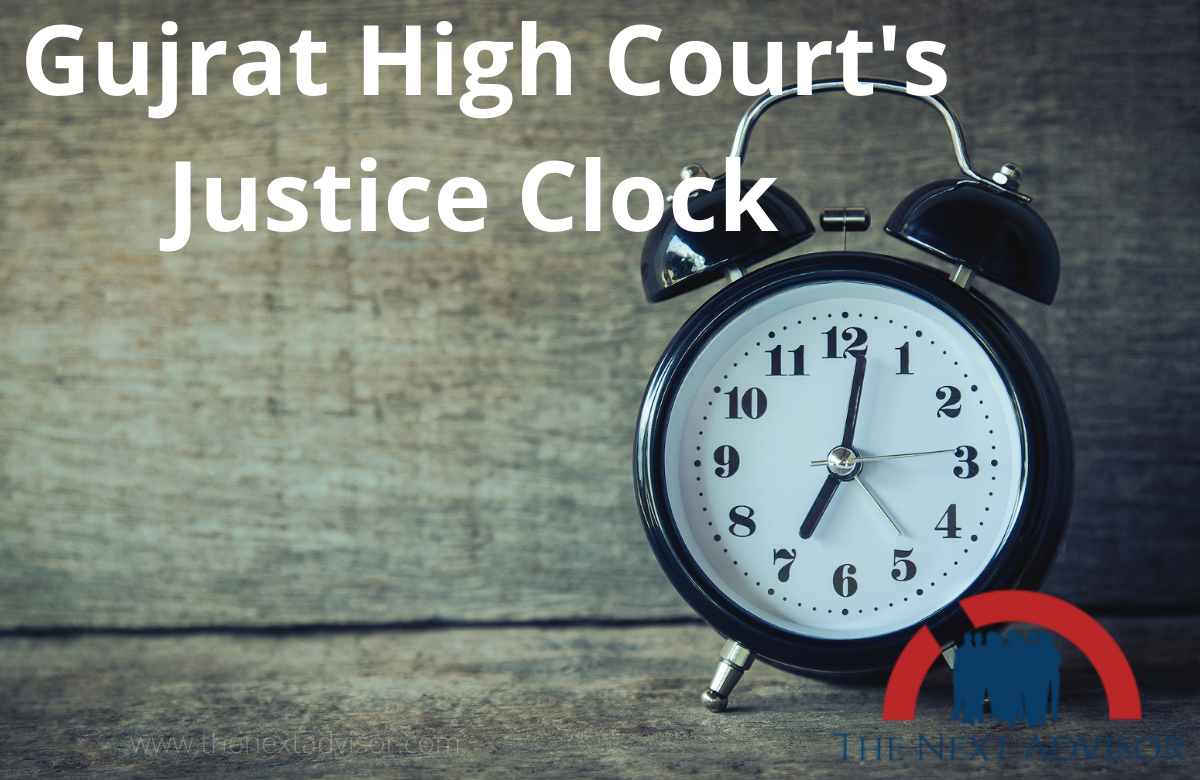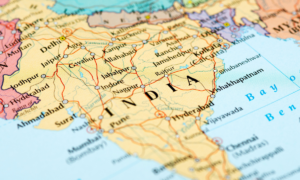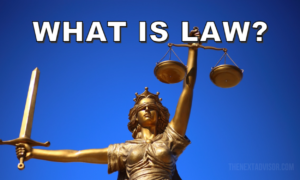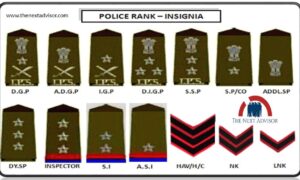We always talk of Judicial reforms and for that reform, there is one important reform, i.e., Digitization. One important source for the digitization of Courts is e-records or e-courts. Like we saw that we operate e-courts in COVID. We feel very better about this. We felt that Judiciary can deliver justice in this way too. This is the evaluationof Gujrat High Court’s Justice Clock.
So if we keep updating digitization in our judicial system, then we can rectify our pending cases. The Gujrat High Court has made a new reform in the Judicial system. Gujrat High Court involves Justice Clock in its Judicial system. Simultaneously, the Gujarat High Court has taken some other digital initiatives. Due to this, the judiciary in ensuring that justice delivery will no longer be delayed.
Gujrat High Court’s Justice Clock and other digital initiatives
Gujrat High Court’s Justice Clock is a totally new concept in the Judiciary system of India. The Justice Clock will exhibit vital statistics of the justice delivery system in Gujarat, to ‘ maximize outreach and visibility. And because of this visibility, people will be able to know how the judiciary is updated to eliminate judicial delays.
Through Judicial Clock vital statistic like, how many cases are registered, how may judgment is delivered, how many cases is pending from how many years, etc… this type of daily update will reach the people. So whenever the public goes to you from Prema of Gujarat High Court, then all this information, all these statistics will be visible to them.
An LED has been installed as the Justice Clock, this is called Gujrat High Court’s Justice Clock. And from the view of LED how many years cases are pending, all such information will be visible on this LED. Due to this, people will know how the judiciary is delaying to delivering justice and the judiciary will also have the excel widow fiction that how it is delaying the judgment and how much money is pending.
Supreme Court e – Committee chairperson and SC judge Justice DY Chandrachud on Monday inaugurated two digital services for Gujarat High Court a ‘ Justice Clock ‘, and electronic payment of court fee.
What is the ‘ Justice Clock ‘?
An LED display of 7 feet by 10 feet, placed at a height of 17 feet from the ground, has been erected at a busy crossroad near the Gujarat High Court premises. This ‘ Justice Clock ‘ will exhibit vital statistics of the justice delivery system in Gujarat, to ” maximize outreach and visibility ” of the work done by the state judiciary.
The interface has been designed and developed in-house and will display data from the National Judicial Data Grid ( NJDG ) in real-time. A similar format of Gujarat judiciary-related statistics will also be available on the Gujarat HC website under a tab of ‘ Virtual Justice Clock ‘, accessible to all.
While the data is already publicly accessible on NJDG’s website, with an option to further distill the statistics district – wise, this new initiative through the physical LED display as well as the virtual justice clock – is aimed at greater accessibility and transparency.
According to Gujarat HC Chief Justice Aravind Kumar, ” one of the crucial aspects ” covered in the content of Justice Clock is the case clearance rate ( CCR ) for the current date. “This CCR is kind of a goal which we will set ourselves and we shall strive hard to achieve 100 percent, where disposal matches the institution (of cases).
What is the e-court fee and how will it help?
While the online e-Courts fee system was already available for the Gujarat High Court, which was tested on a pilot basis allowing advocates and parties to procure judicial stamps online through electronic payment and upon submission of a PDF receipt, this platform now stands expanded to all district and taluka courts.
The payment platform is of StockHolding Corporation of India Ltd (SHCIL) as impaneled by the Gujarat government. A PDF receipt of the fee paid will be generated and submitted to the court registry concerned. It will then be verified from within the digital case information system and locked as ‘ consumed ‘, wherein the receipt will be defaced, so as to avoid its reuse or misuse.
Why the two initiatives?
The two digital initiatives add to a slew of other digital measures the Gujarat HC has undertaken to cope with Covid – 19. As Justice DY Chandrachud has often emphasized, digital transformation brings transparency and openness in court proceedings and also provides a glimpse to the public at large of how judges function.
“Let there be no doubt about it that all these measures are now bringing focus on judges, how we conduct ourselves, how long we sit in courts, the seriousness with which courts are handled and cases are conducted, the courtesy which judges show to members of the bar and litigants, particularly those lawyers who are not among the higher echelons in the hierarchy of the bar.”
Facilitating electronic payment of court fees becomes essential especially in light of Covid when the physical entry of advocates and litigants has been restricted inside the premises. With electronic payment, the need to physically procure judicial stamp papers and submission of fees is done away with.
Are there any concerns with these initiatives?
While the initiative of electronic payment of court fee has seen unilateral support across the Bar, about the ‘ Judicial Clock ‘, Gujarat High Court Advocates lauded the effort for bringing in “transparency “, expressed a concern that ” in the zeal to show higher disposal of cases to the public, ” let justice not be ” sacrificed “.
Earlier efforts for digitization of Judiciary:
Technological interventions in the form of e-courts are being established to address the issue of pendency and other problems. Despite some hiccups due to the Covid – 19 pandemic, the Supreme Court and High Courts have been able to function online.
360 – Degree Profiling: Phase III of the e-courts Project envisages creating a 360 – degree profile of each person by integrating all of their interactions with government agencies into a unified database. Through this data can be exchanged between various branches of the State, such as between the judiciary, the police, and the prison systems through the Interoperable Criminal Justice System (ICJS).

























